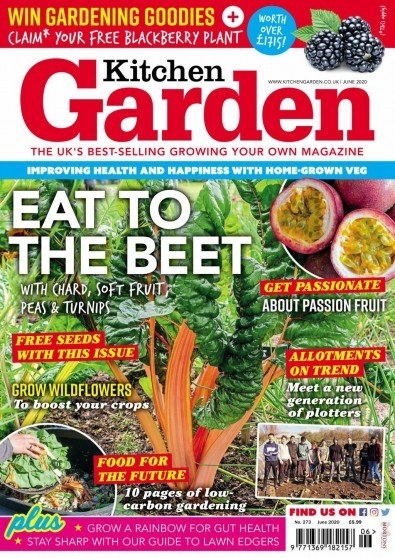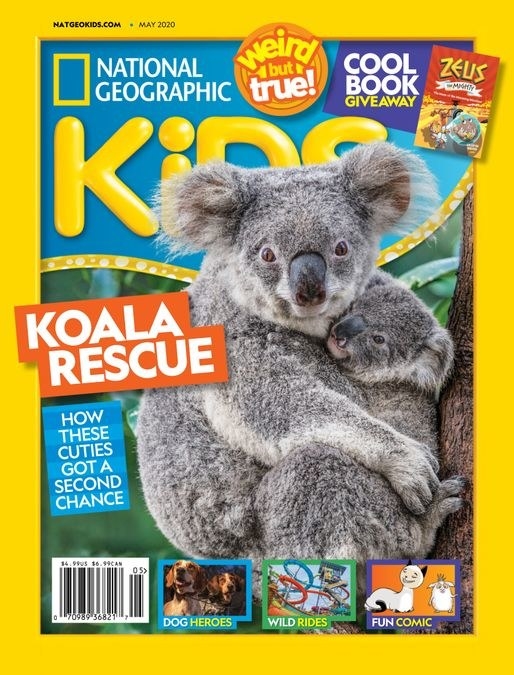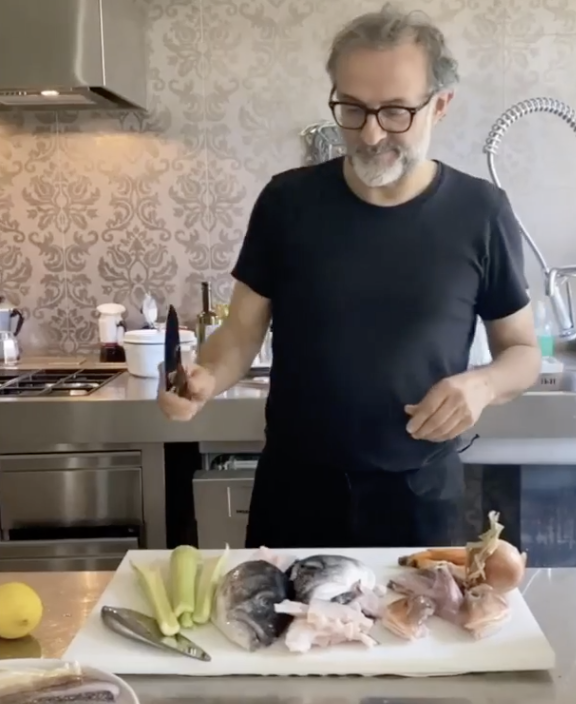
BuzzFeed News has reporters across five continents bringing you trustworthy stories about the impact of the coronavirus. To help keep this news free, become a member and sign up for our newsletter, Outbreak Today.
The coronavirus has been described as an extinction event for the media industry, but while overall advertising revenues are plummeting, some specialist outlets are adapting to the unprecedented times and seeing a boom in sales and new readers.
BuzzFeed News has spoken to industry insiders and experts around the world about how some titles are thriving by reflecting the new reality of lockdown life.
Subscriptions to glossy magazines are up, sales of publications focusing on puzzles or content for children are soaring, and websites capitalising on hundreds of millions of amateur cooks, bakers and gardeners stuck at home are seeing record traffic.
“Readers simply have more time now,” said Wolfgang Blau, chief operating officer and president, international, Condé Nast.
“They can't go out on weekends or in the evenings,” he told BuzzFeed News, so instead they “opt for “high-quality magazines.”
Sales for Condé Nast titles have grown throughout the crisis, while subscriptions to publications like the New Yorker, Vanity Fair and the architectural magazine AD have hit record levels.

Overall, the company’s new subscribers in the US in March and April are about double the same period last year, while new subscription orders for UK titles are up by 420% since the lockdown began on March 23 compared with the same period last year.
Condé Nast print subscriptions have also grown in China, Germany, India, Spain, and Russia, where the Russian edition of Glamour has launched an “#athomewithGlamour” section on its website, and each day is livestreaming makeup tutorials, lectures, workout sessions and cooking classes on its Instagram channel.
Blau said titles have had to “shift gears” editorially as readers’ lives are directly affected by COVID-19, highlighting Vanity Fair’s Italian edition as an example.
Vanity Fair is now trying to be a forum for “Italy's own soul searching and self-examination of what it will be and what it wants to be after this marathon of pain is over,” said Blau. “In journalistic terms, you might call that factor 'editorial relevance', but I think they achieved more than just that. The team of Vanity Fair realised it had become a lifeline for its readers and then has risen up to that enormous responsibility."
Newsstand sales of a special edition of Vanity Fair carrying the slogan #IOCISONO — I am here — saw a big jump in sales.
Relevant journalism works: The newsstand sales of Vanity Fair Italy's #IOSONOMILANO issue are +62.4% above last year, those of the #IOCISONO issue are +78.5% above last year. Ad pages are more than double that of its closest competitor. And this with 30% of newsstands closed.
The edition focused on the human stories behind Italy’s health crisis, including interviews with many of the medics, scientists and volunteers helping fight the virus.
Meanwhile, Condé Nast’s technology publication Wired has more than doubled its traffic by shifting its focus to coverage of the coronavirus.
Bauer Media, another major publisher, told BuzzFeed News that its lifestyle magazines in the UK are also doing very well, with Yours and Grazia seeing big increases in print subscriptions. Meanwhile, print subscriptions to its Total TV Guide are ten times the equivalent period last year.
Hannah Wood, the general manager of isubscribe, the UK’s biggest marketplace for print and digital subscriptions, told BuzzFeed News that sales were up 260% compared to the weeks before the lockdown began, and all 23 of its website categories have seen growth.
While many readers are turning to detailed analysis of the impact of the virus, others are turning to magazines to escape or brighten up life in lockdown.
Sales in the home and garden category have surged, according to the isubscribe data, with Kitchen Garden, a magazine which provides tips on growing your own fruit & veg at home, the top seller.

Puzzle magazine sales are also through the roof, with publishers seeing growth of up to 1,200% since Britain’s lockdown began according to Wood.
Shameem Begg, of Puzzler Magazine, the UK’s largest puzzle supplier, said some of the brand’s 40 titles saw “astronomical” sales in the week before the UK’s lockdown was formally announced, when people realised they were going to be spending a lot more time at home.
Children’s magazines have also exploded in popularity, she said.
Carola York, vice president of publishing at the subscription company Jellyfish, told BuzzFeed News that children's titles, including The Week Junior, How It Works and National Geographic Kids, had all seen incredible increases.

With face-to-face meetings and travel banished, much of the working day is spent online. In this sense, magazines are providing a rare tactile escape.
“Those of us who work from home now, tend to spend even more hours each day and night looking at digital screens than when we worked in offices,” said Blau of Conde Nast. “So, while this crisis has accelerated the learning of social digital skills at a mass scale such as video-conferencing or video-based home-schooling, it might also have increased our appreciation again for physical experiences and physical interactions,” he added. “That includes touching, and reading physical magazines.”
Anyone who spends any time on social media will have noticed that many of their friends are suddenly busy making bread. This more homely approach to the kitchen is mirrored in the type of content that people are consuming online, and that media outlets are producing in greater volume.
Meredith Corporation, a US media conglomerate based in Iowa, says traffic has increased hugely on websites like allrecipes.com, foodandwine.com and myrecipes.com.
This new traffic doesn’t always automatically equate to more ad sales, and the commercial side of many businesses is struggling. But some creatives are doing their best work: forced to work on the fly — and mostly in their own homes — publications have become more spontaneous as they try to be relevant.
There has been a particular surge in traffic for pages explaining how to bake bread and how to copy dishes from popular restaurants which people are unable to visit.
Bon Appétit, a US food magazine with an extensive digital presence, has had to adapt.
The brand’s YouTube channel is continuing to post content to its 5.8 million subscribers. Some of it was filmed before the outbreak hit but other footage has been made by staff under quarantine.
The title’s kitchen editors have all been provided with tripods and mics to shoot DIY cooking videos on their iPhones, editor-in-chief Adam Rapoport wrote. “That means you’ll not only get to check out their home kitchens, but also meet some pets, and perhaps a toddler or spouse or two.”
In the US, Bon Appétit has had some of the biggest online growth across Condé Nast titles.
Heat up your TV dinner because today we're announcing The BA Test Kitchen Variety Show. It's a hopefully funny, slightly chaotic, and definitely memorable night online to raise money for @wckitchen. May 1st at 7 p.m. ET. Live on YouTube. Set a reminder: https://t.co/bshneHgbBg
BuzzFeed's own food brand, Tasty, was already the biggest global food network but has seen an increase of over 30% of active users on the website alone. BuzzFeed's UK Tasty Facebook page, "Proper Tasty" has seen a 49% increase of monthly active users. Traffic, downloads, and engagement are surging across all platforms as users are trying to figure out how to cook and eat in this new world we live in.
Top chefs have also taken to the trend of producing home cooking series, independently publishing on their social media channels. Among them is Michelin-starred Massimo Bottura, who has launched a show called Kitchen Quarantine that is broadcast live on his Instagram page.

Something similar is happening in the world of interior design. Much of the growth in views of Condé Nast videos in Spain has been driven by a new AD (Architectural Digest) series of home video tours with celebrities and designers, which is produced remotely.
DIY websites are riding similar trends. Home and garden sites are seeing a boost in traffic for content that “answers readers’ most pressing questions”, a Meredith Corporation spokesperson told BuzzFeed News. These include generalist areas such as gardening, as well as COVID-19 specific explainers like “how to buy mask supplies, and the science behind why crafting is good for your mental health”.
Alongside restaurants, the imposition of lockdowns and social distancing measures has meant that many people spend most of their time at home with much of their daily normalcy, such as going to the gym or events, now off limits.
Several outlets have tried to recreate these activities online. Teen Vogue is organising a virtual prom while British fitness coach Joe Wicks has been doing a daily exercise video aimed at children that regularly hits several million views. Wicks is donating all the ad revenue from the videos to the UK’s national health service.

The BBC recently announced the “biggest push on education in its history” offering 14 weeks of educational programmes and lessons to every household in the country.
BBC Bitesize Daily has been offering a “tailored day of learning” across digital and broadcast channels since April 20.
The BBC as well as commercial broadcasters like ITV and Sky News have all reported a big uptick in audiences for TV news bulletins, which had been declining for years.

Although advertising revenue has fallen sharply for news outlets, some websites have generated record traffic and certain print publications have seen a rise in paid subscribers and members.
El Diario is an online-only Spanish newspaper which charges for membership.
Director of strategy Maria Ramirez said the paper went from having 36,000 subscribers on March 10, just before the outbreak hit Spain hard, to 52,000 now.
Ramirez says the cost of annual subscription was also increased from 60 to 80 euros (from about £52 to £70) — readers were given the opportunity to keep the old price if they could not afford this but an “overwhelming majority” accepted the new price, with some going even further.
“As a result, we have never had so much revenue coming directly from readers as we have now,” she told BuzzFeed News.
“In normal times, advertising means 2/3 of the revenue, but with the big push of subscriptions in the last few weeks and the declining prospects for advertising we think this year it’s going to be 50/50 or even more in favour of subscription revenue.”
Traffic to the BuzzFeed News website has increased 87% in the past month, reaching over 51 million people in the month of March, according to ComScore data.
In the UK, several newspapers including the Guardian, the FT and the Times have seen a spike in members and subscribers.
The longer term challenge for the media industry as a whole will be to continue to adapt to these changing trends, while translating some of these new initiatives, readers and followers into lasting revenue as other sources of income continue to fall.


